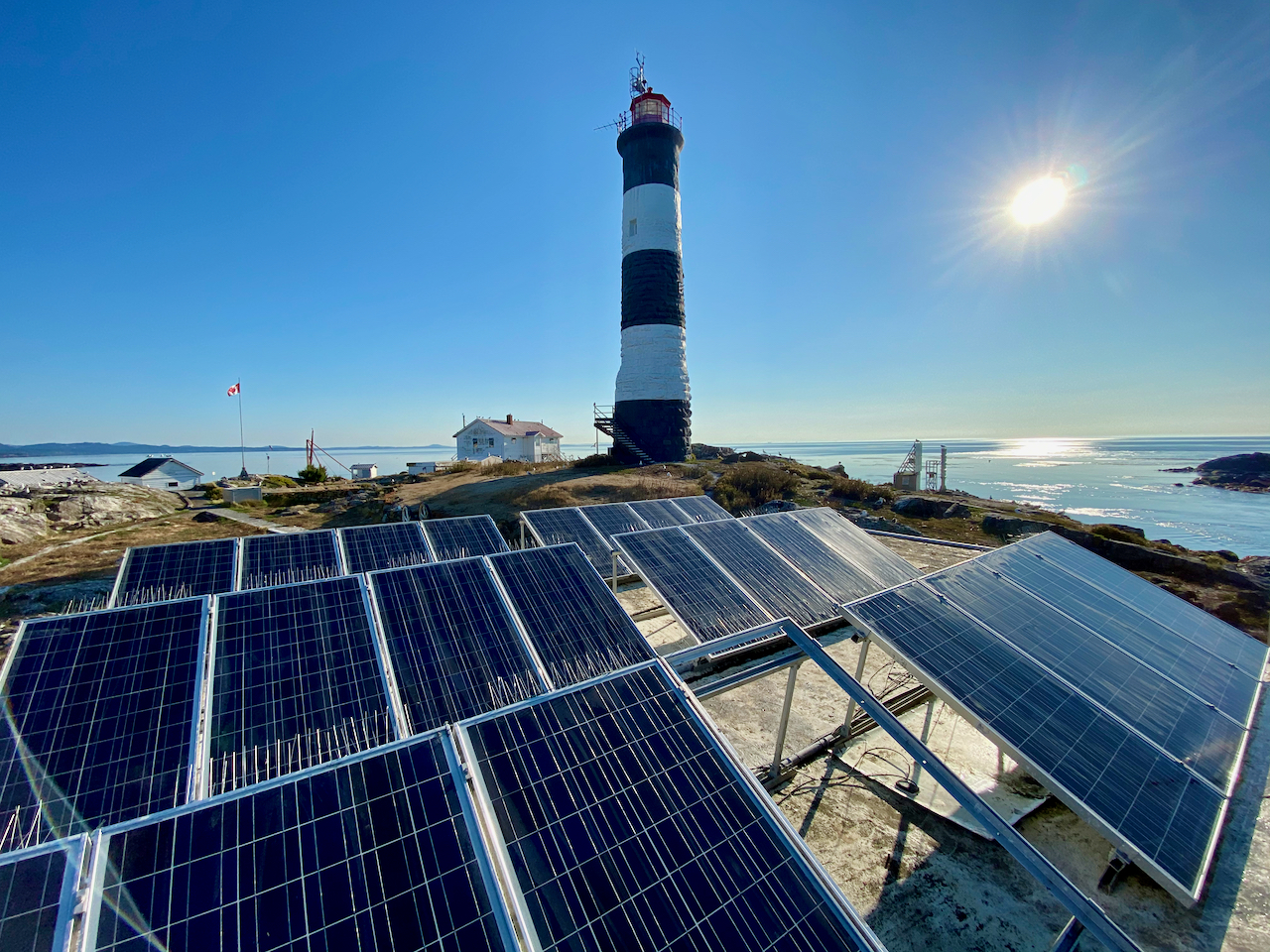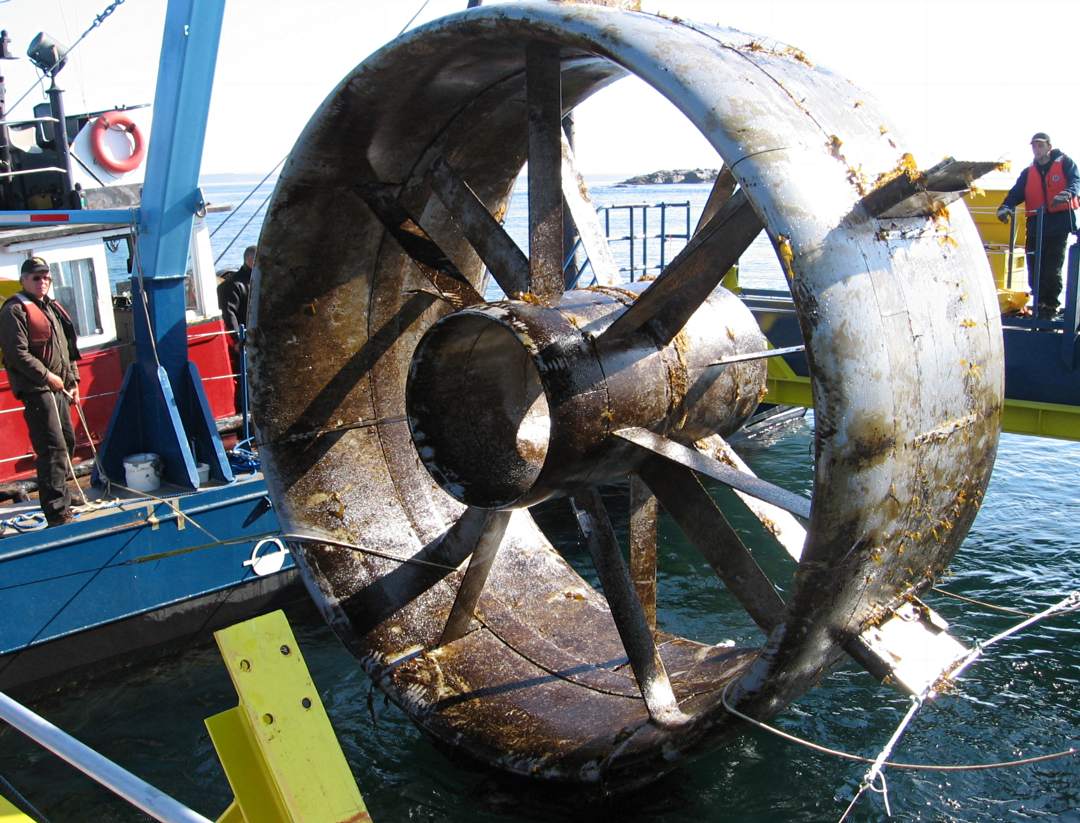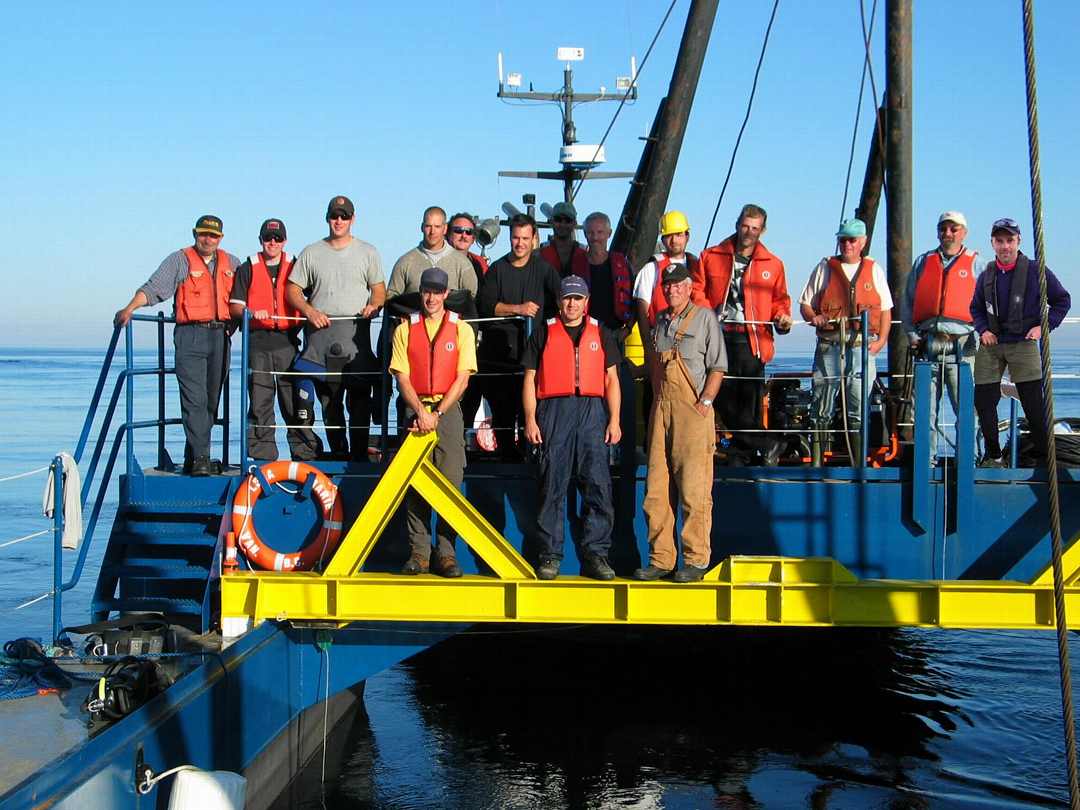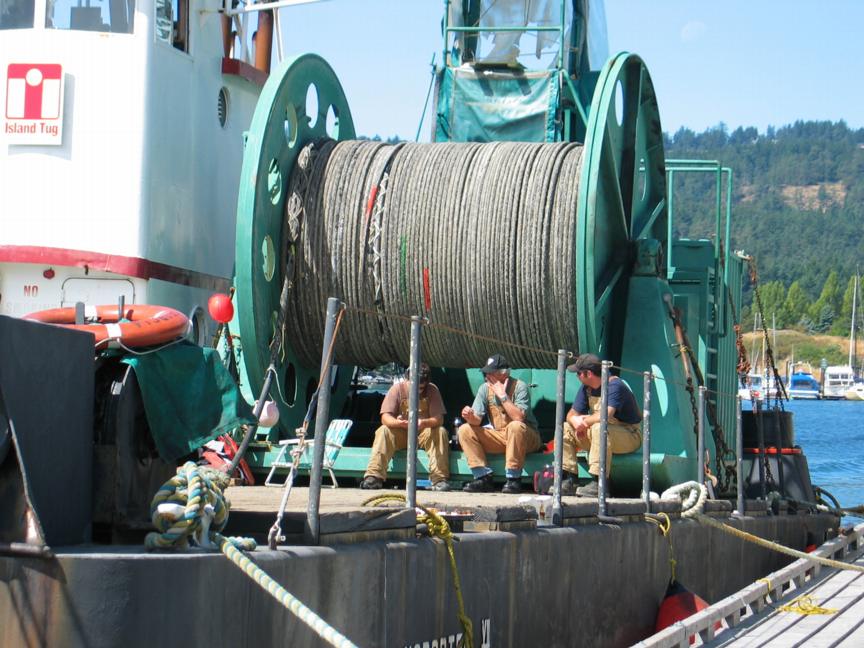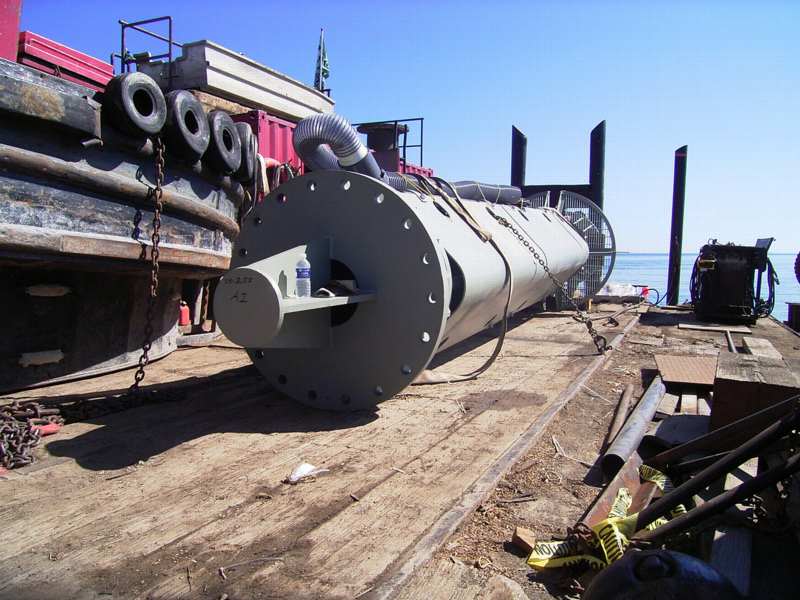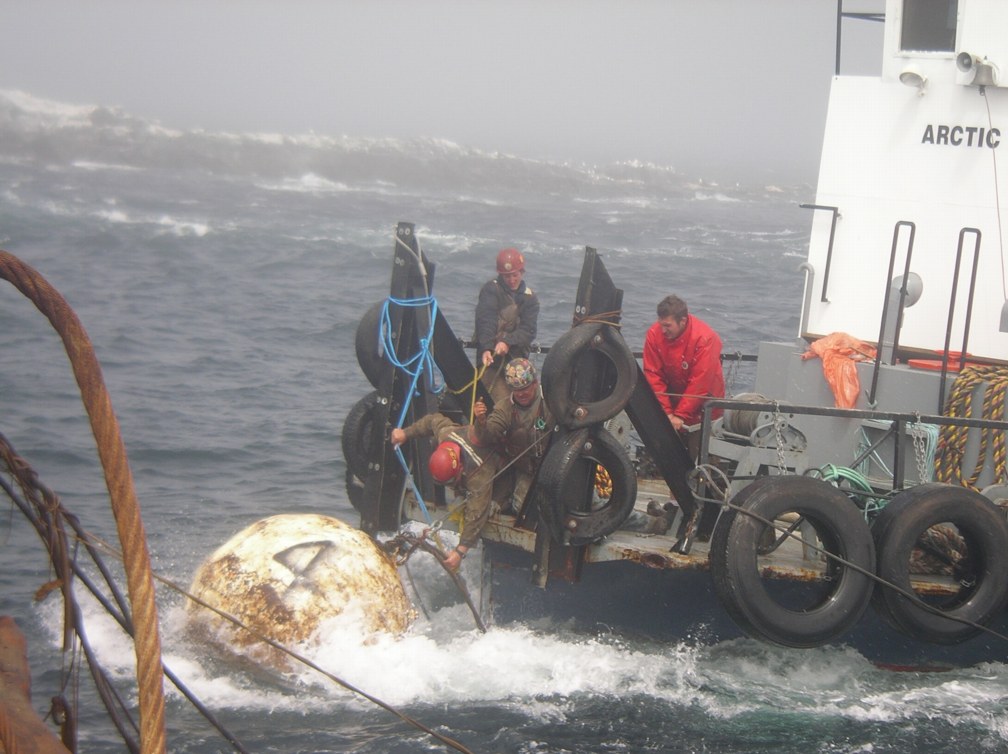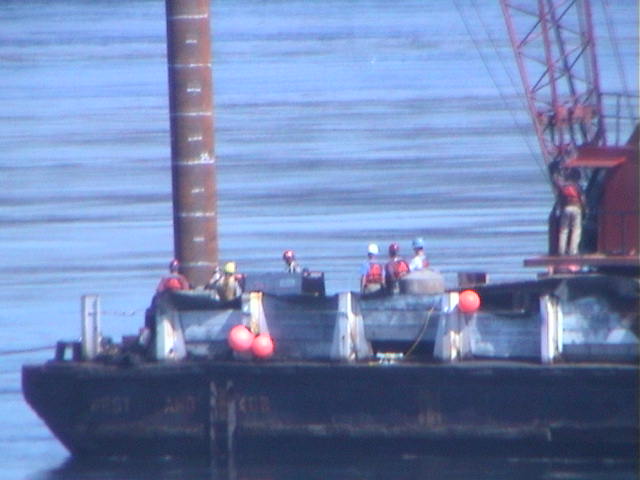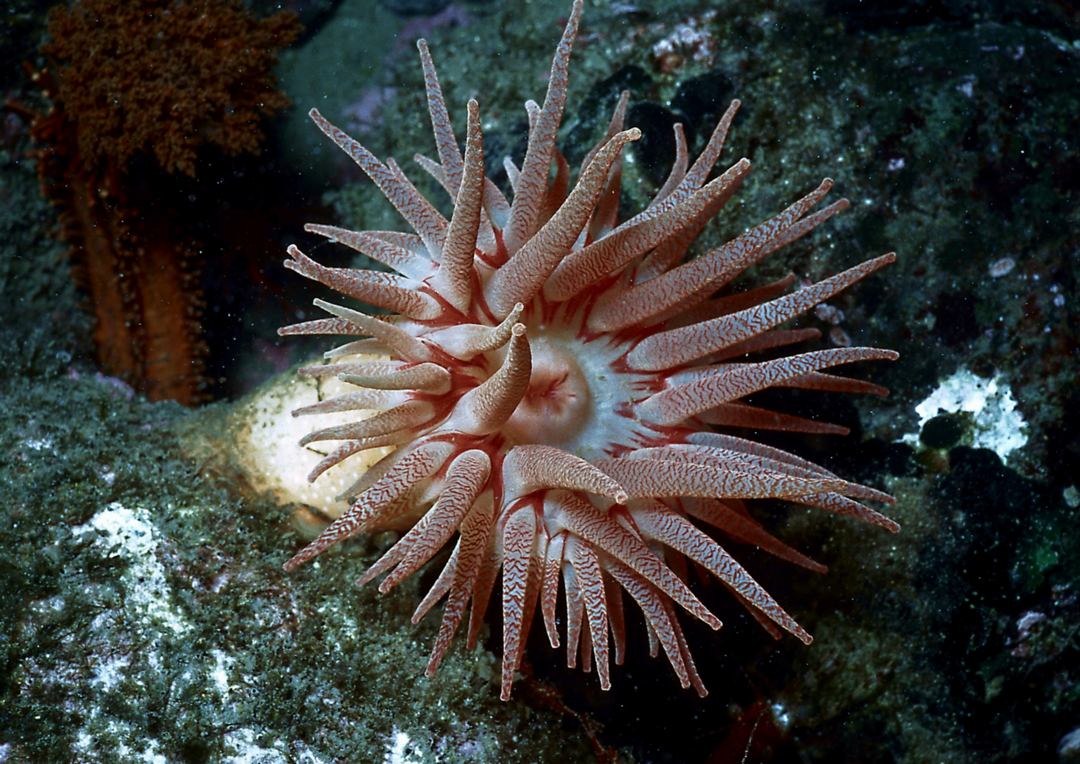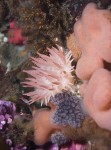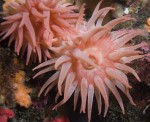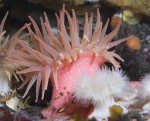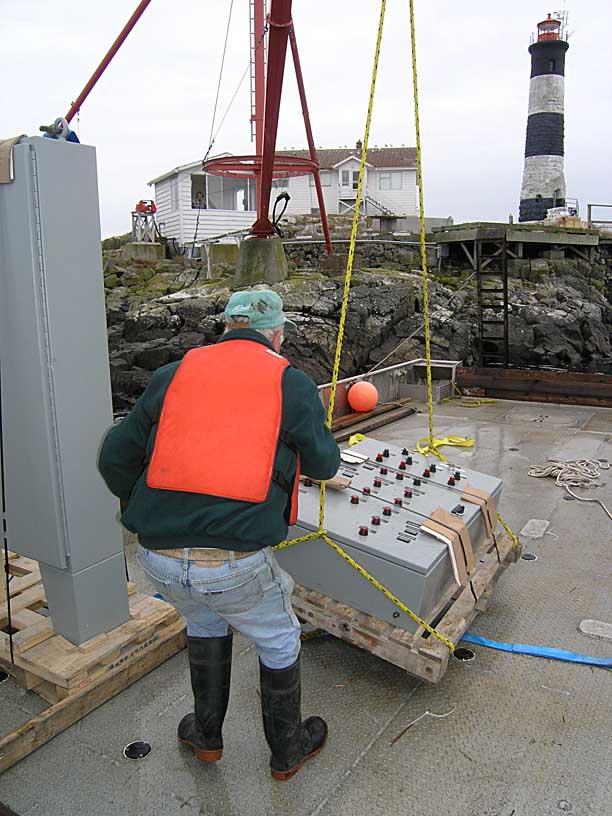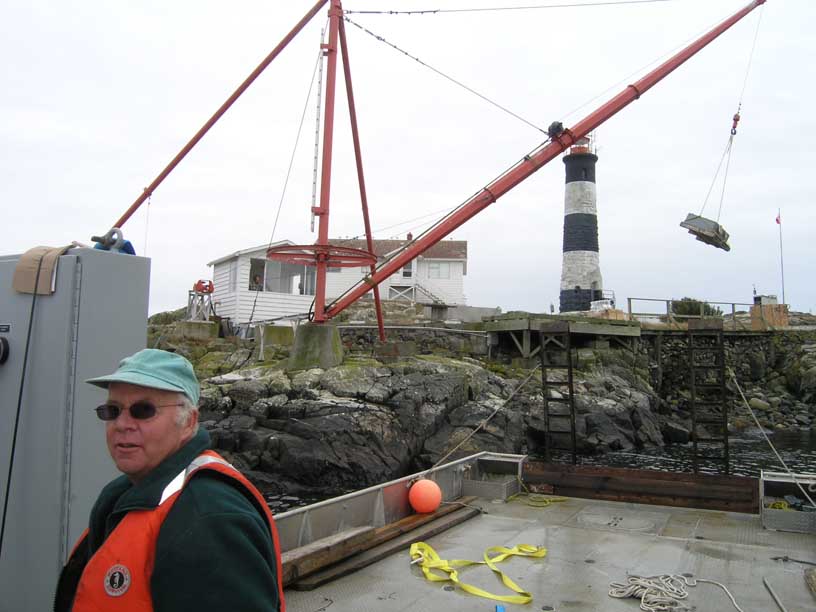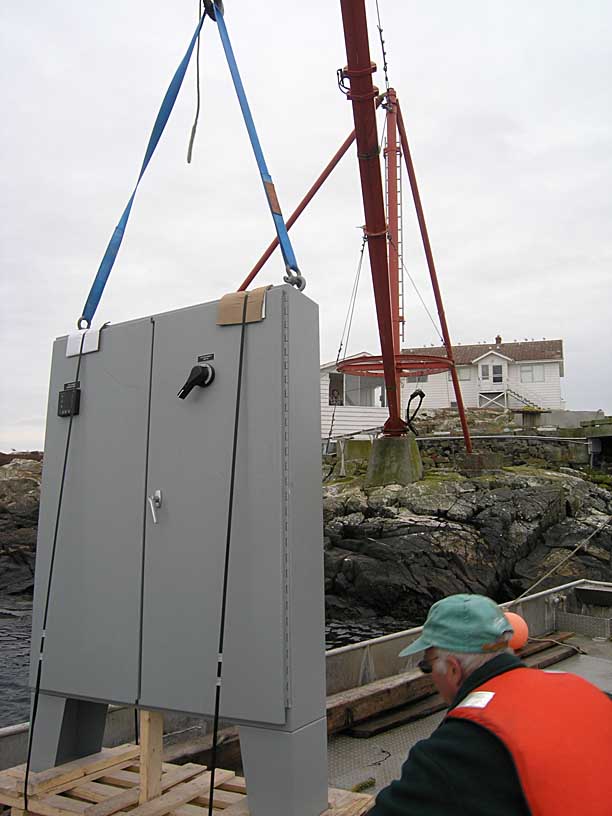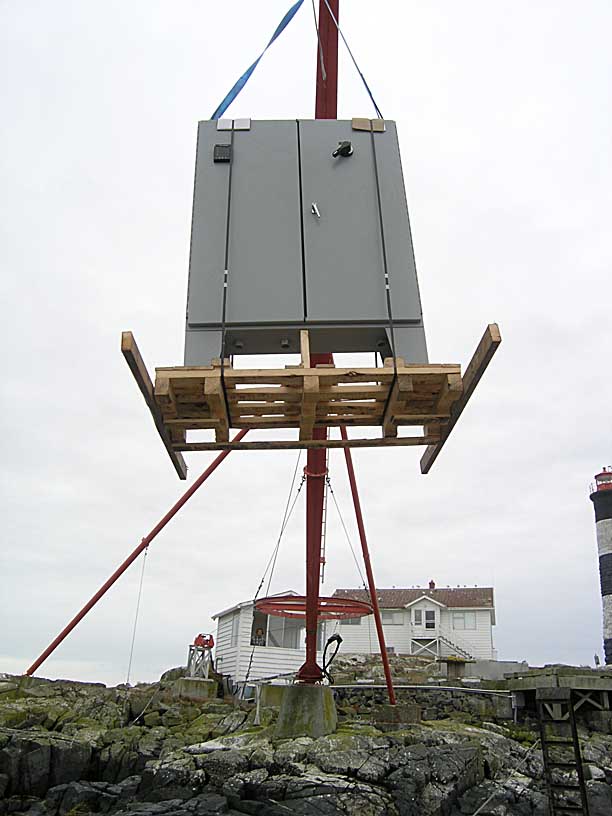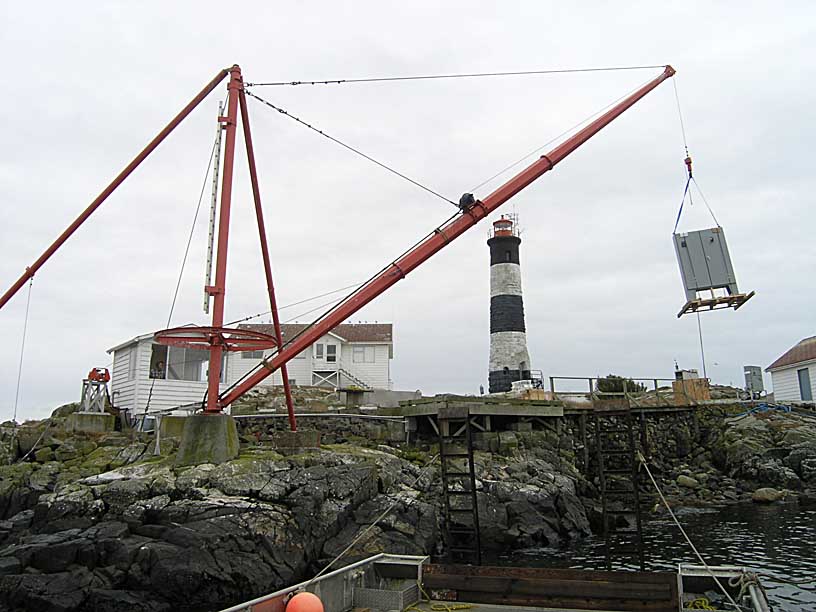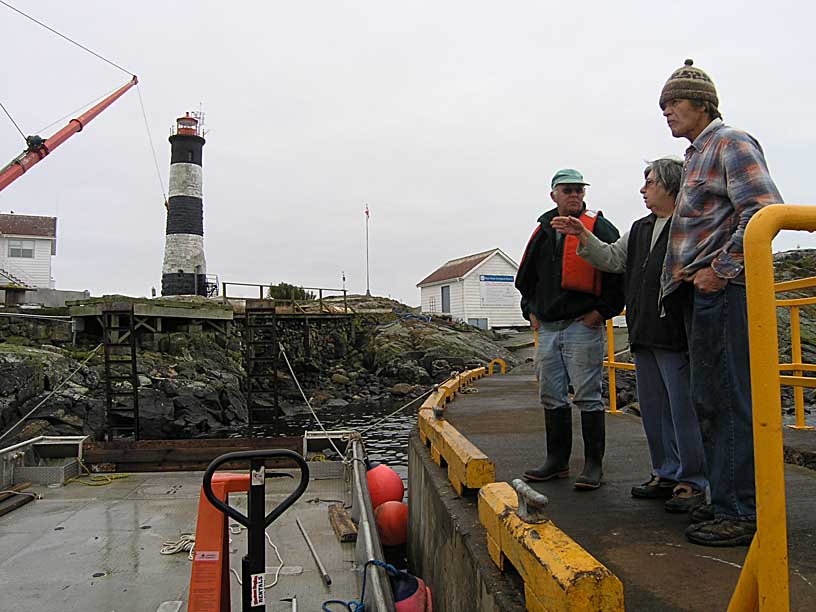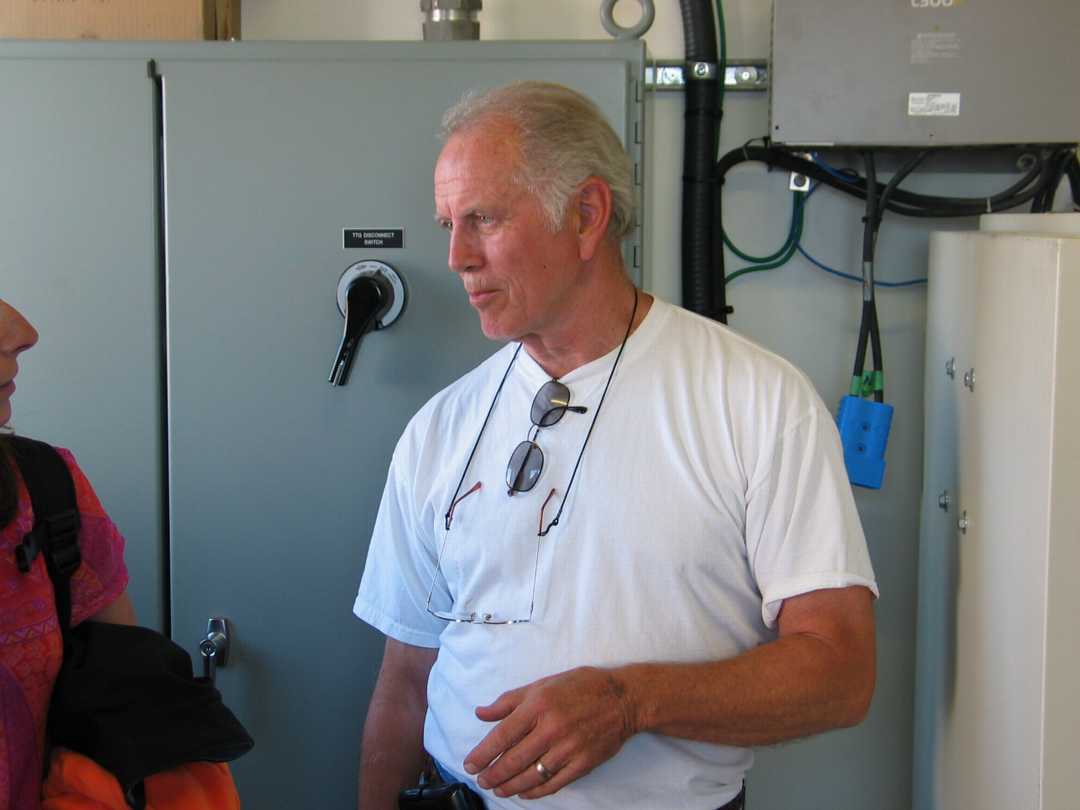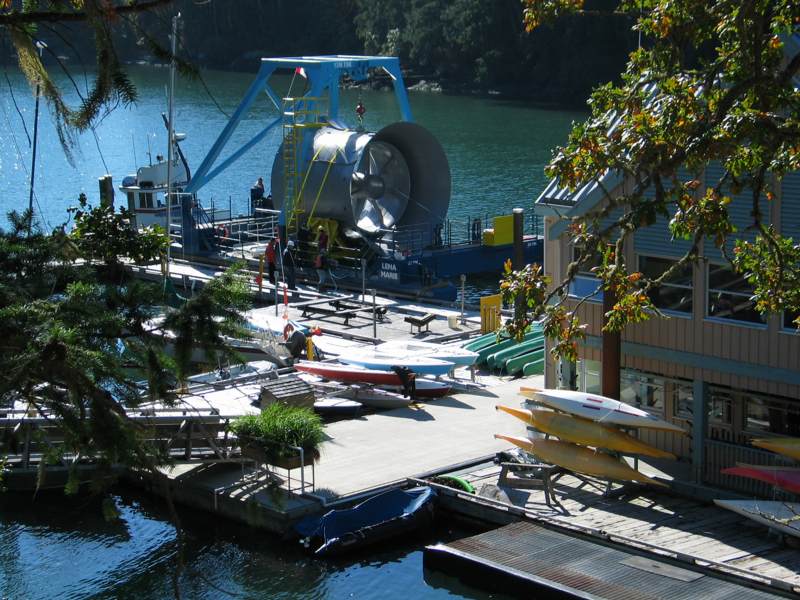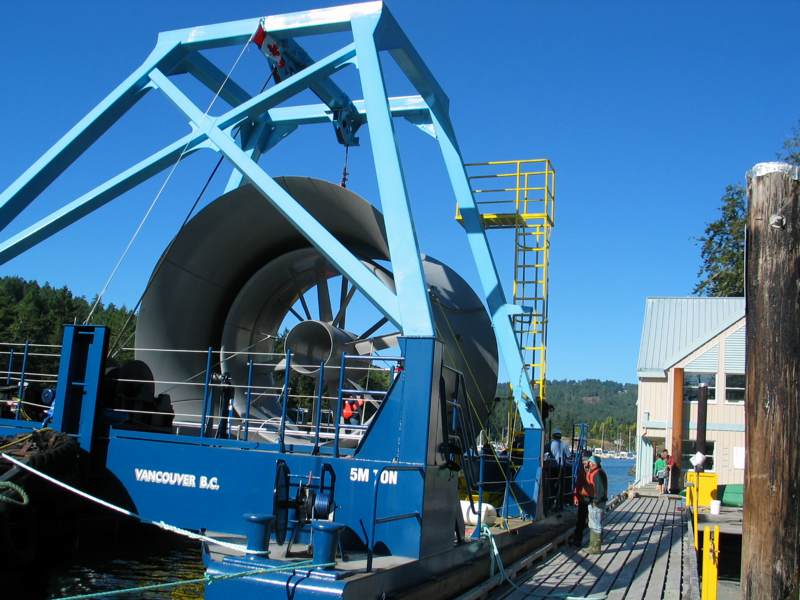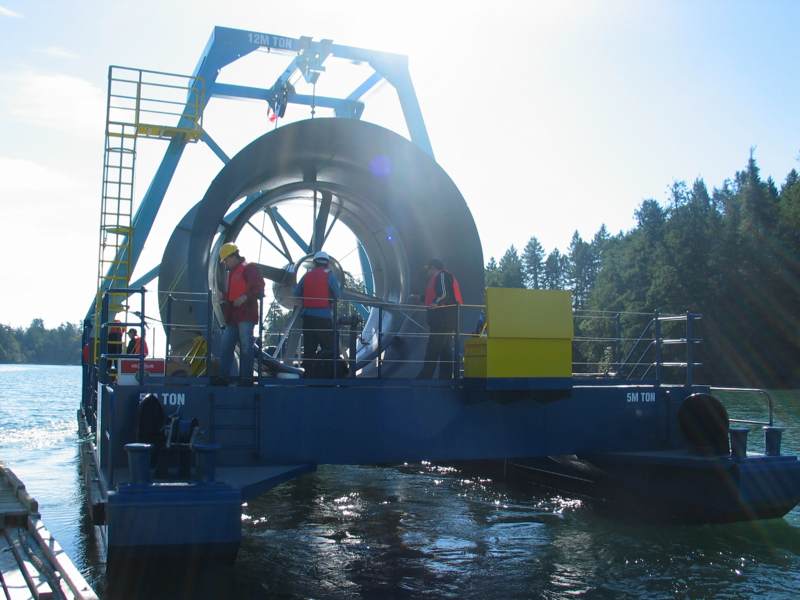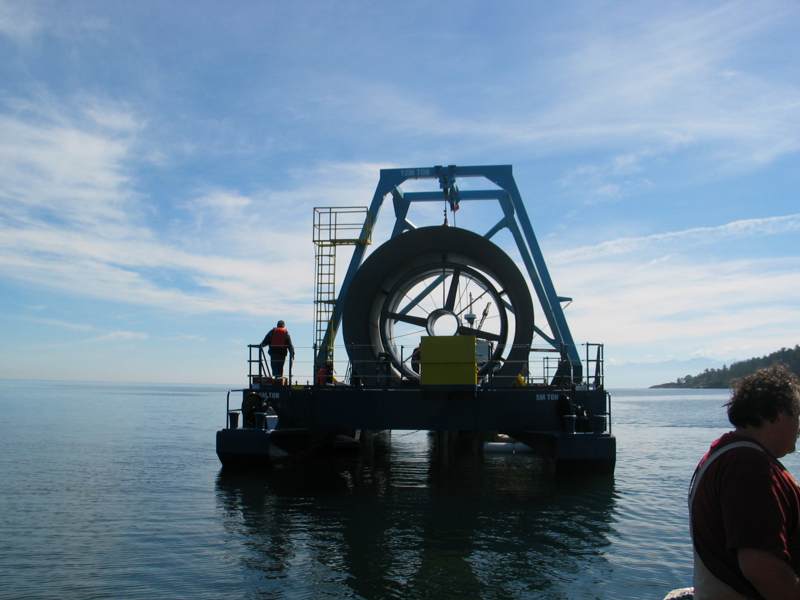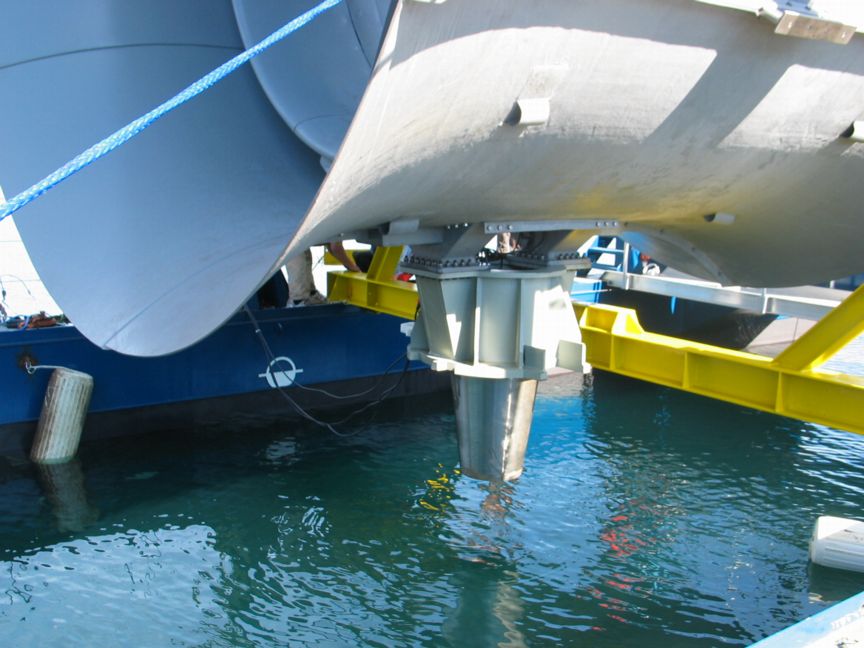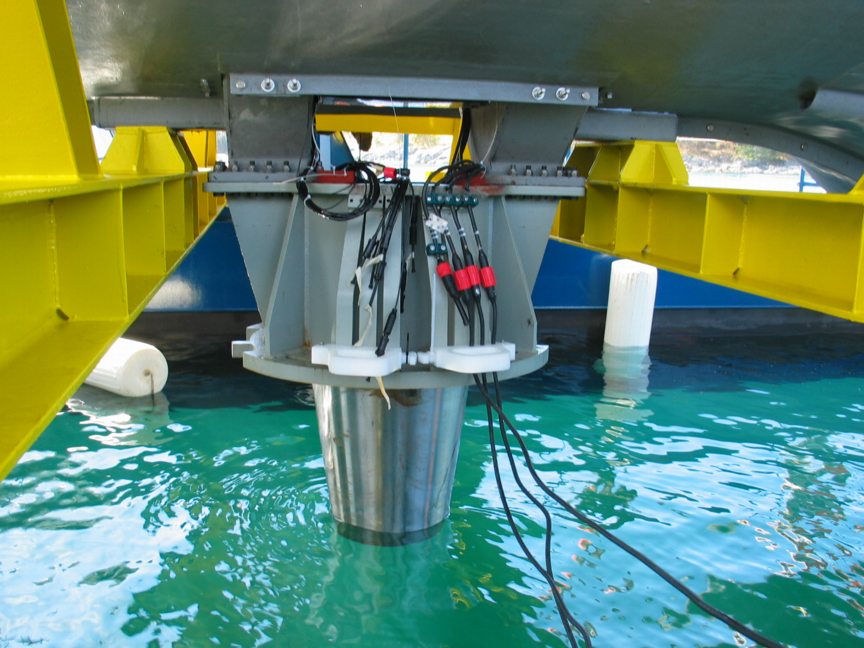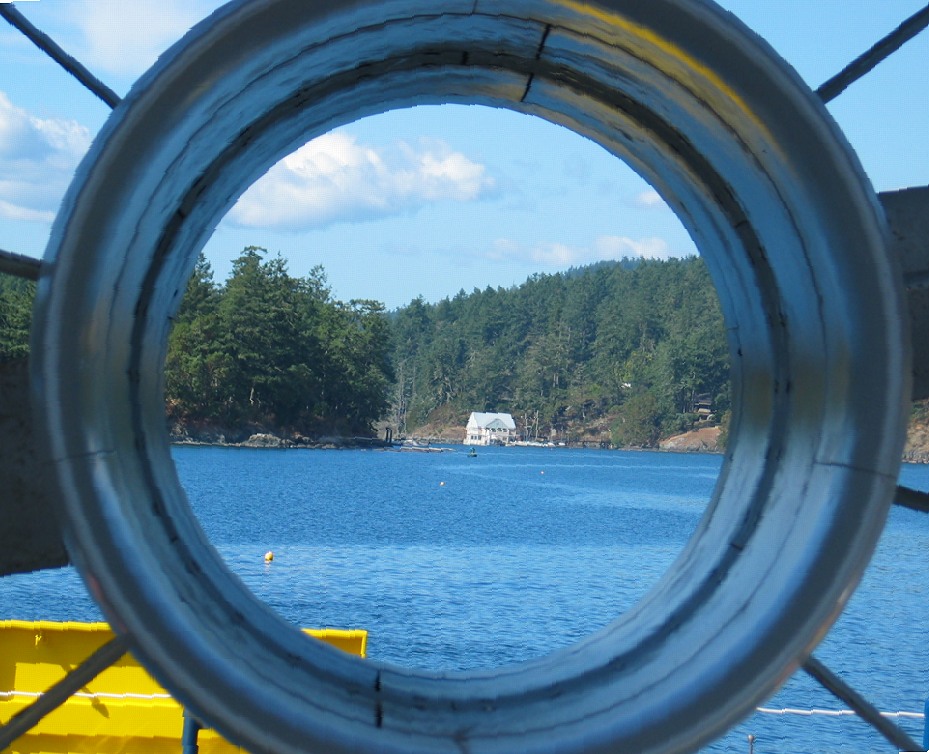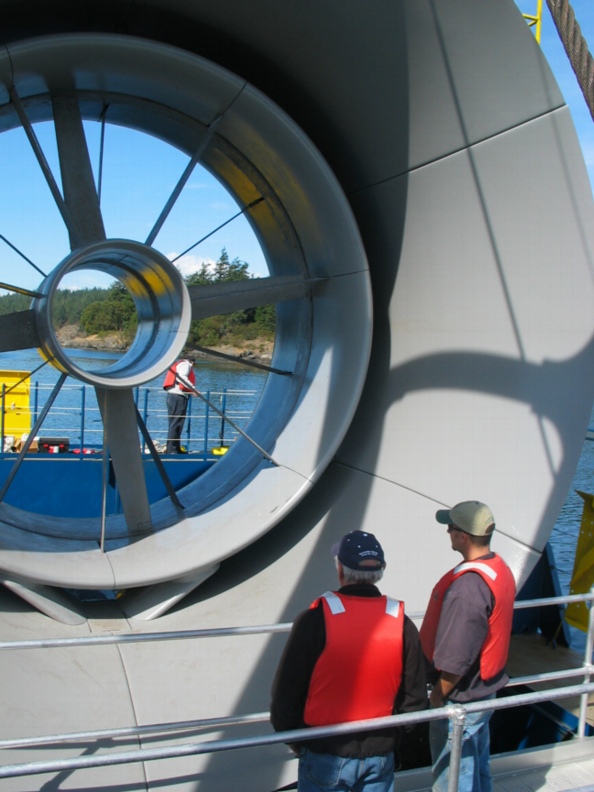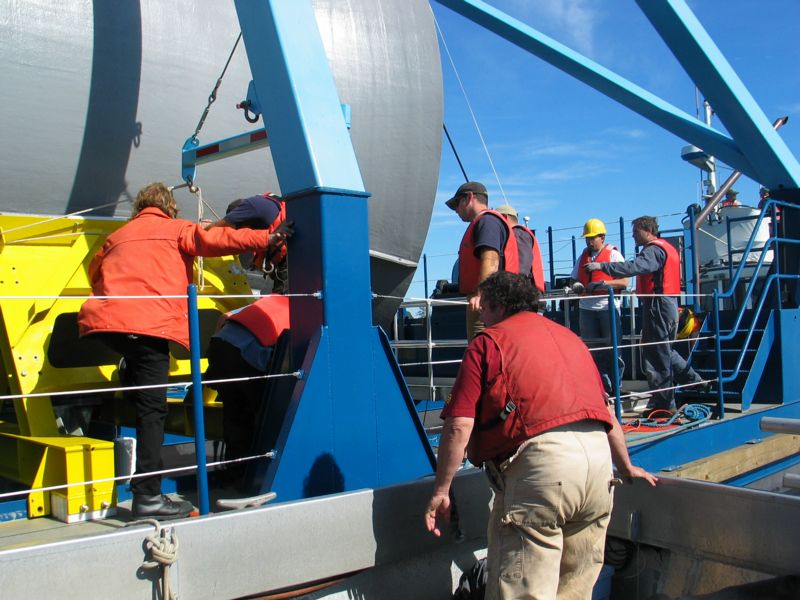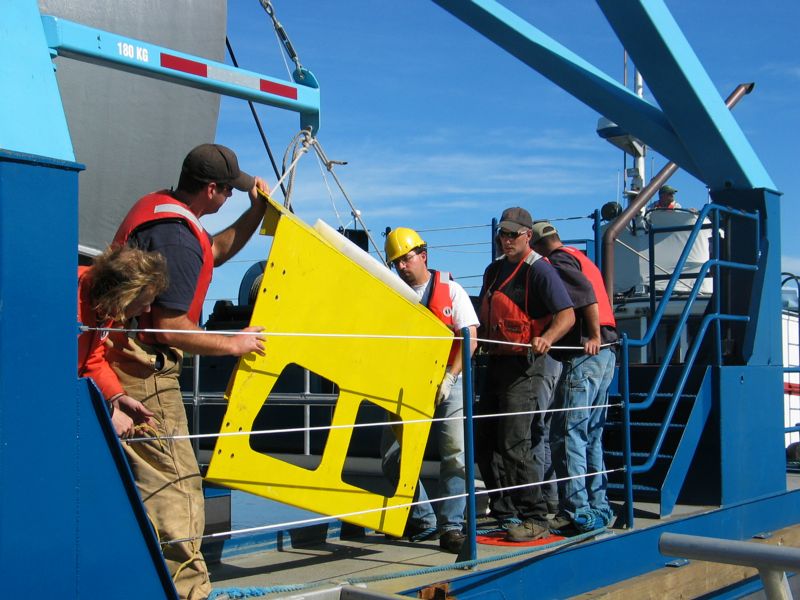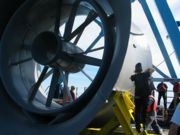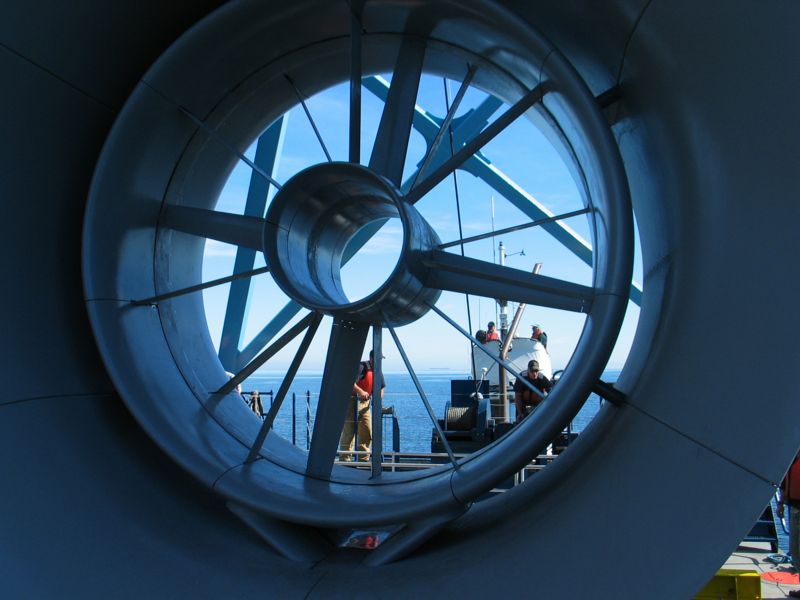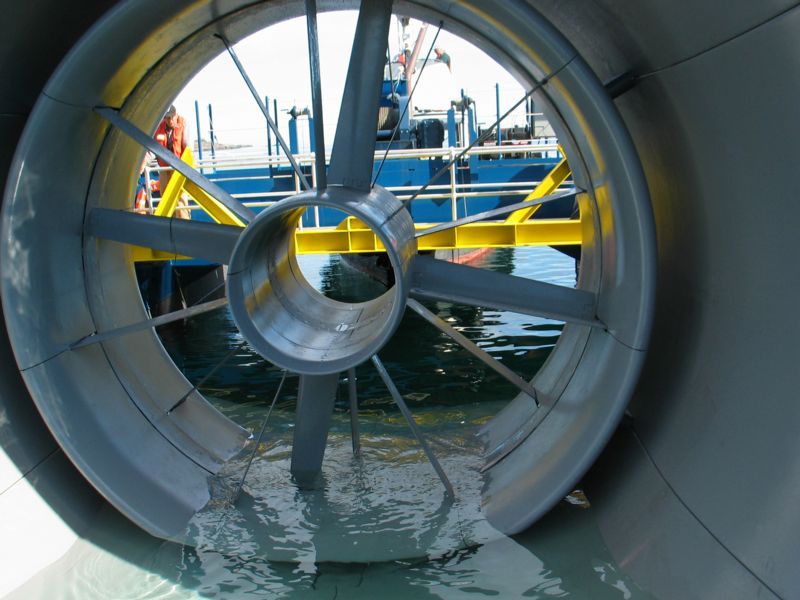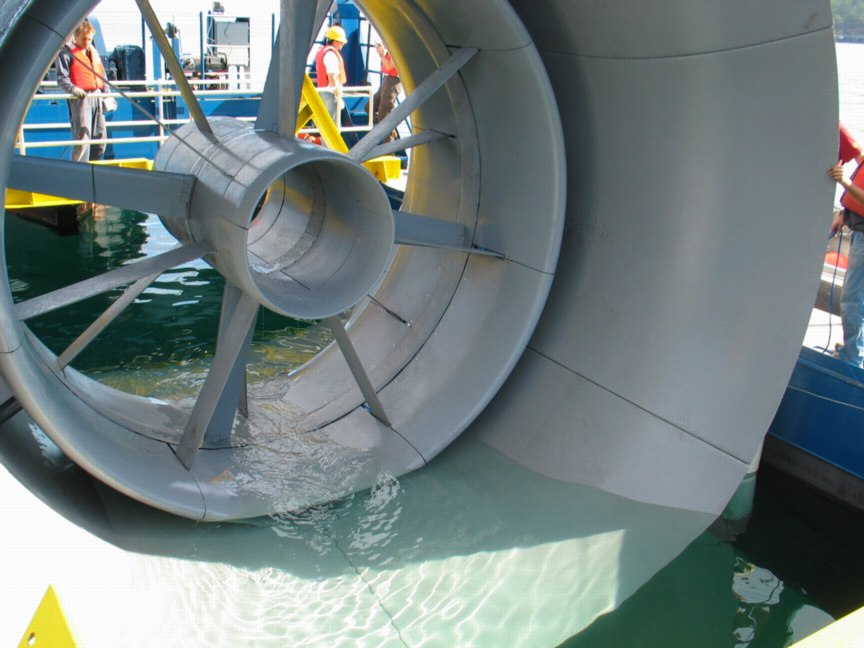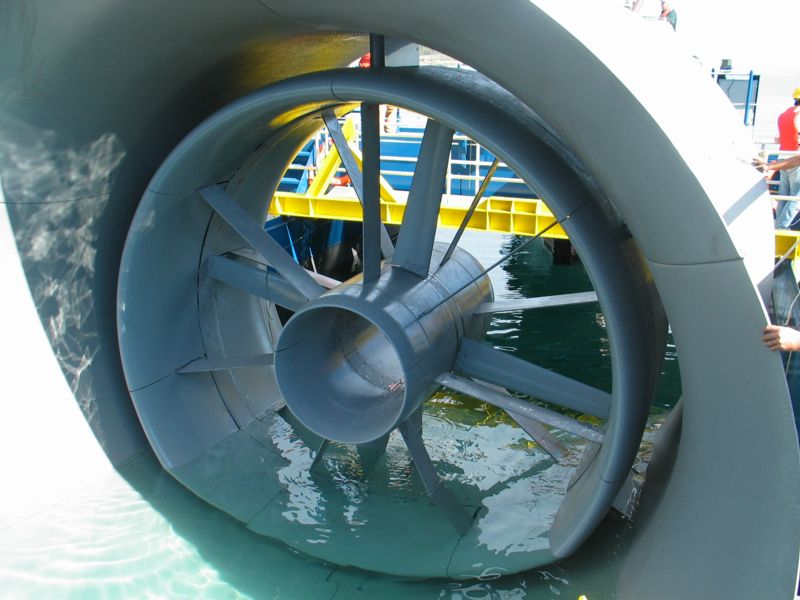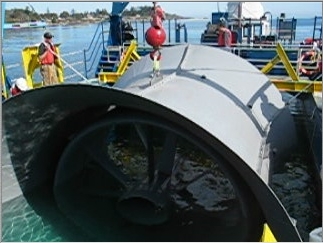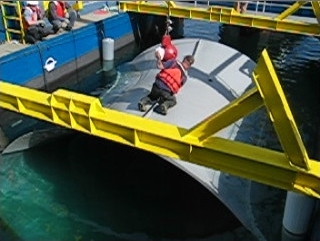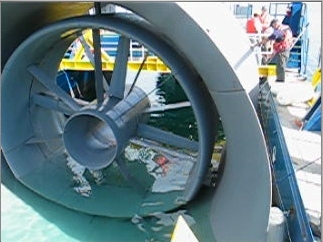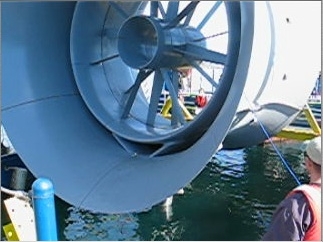With the Pearson College – EnCana – Clean Current Tidal Power Demonstration Project at Race Rocks now fully underway, we are seeing a variety of activities in the preparation for the tidal generator and other components of the Integrated Energy System at Race Rocks. Look for the most recent updates at the top of this page.
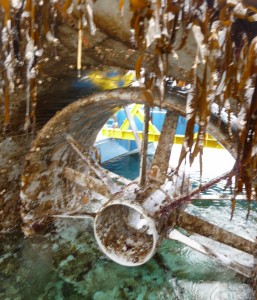 END of Tidal Energy project and removal of Turbine
END of Tidal Energy project and removal of Turbine
In the late summer of 2009, Pearson College installed six new 165 watt solar panels to add to the existing bank of 38 panels on the energy centre.
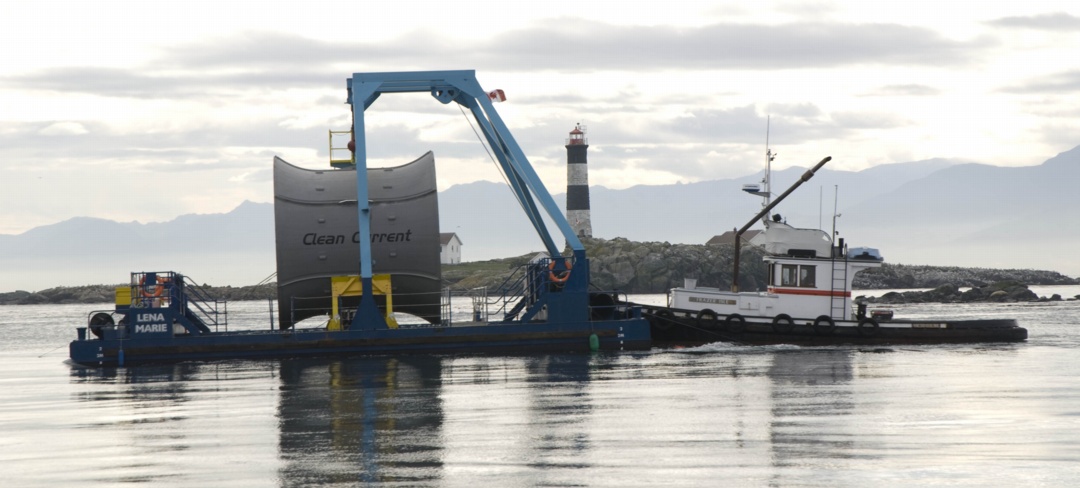 Redeployment of the Tidal Energy Turbine October 2008
Redeployment of the Tidal Energy Turbine October 2008
April, 2007.The tidal energy turbine is raised to change the bearings which had been deteriorating faster than expected.
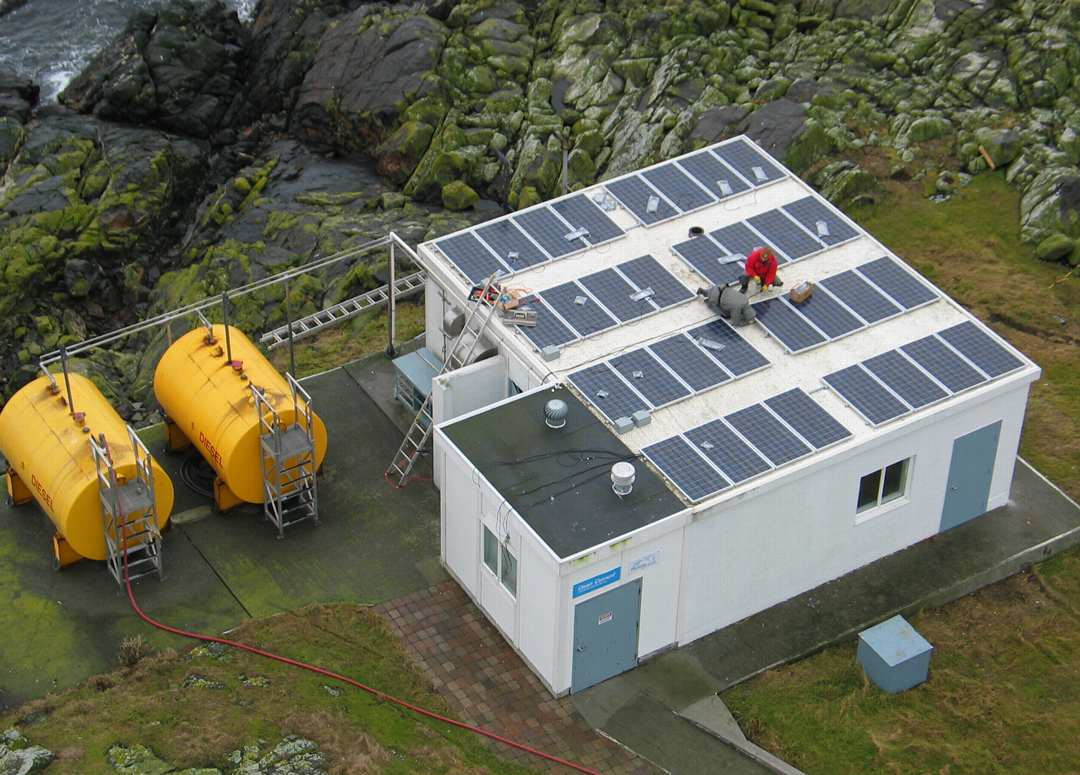 Cementing anchor bolts to the roof January 17, 2007
Cementing anchor bolts to the roof January 17, 2007
Installaton of solar panels January 25,2007
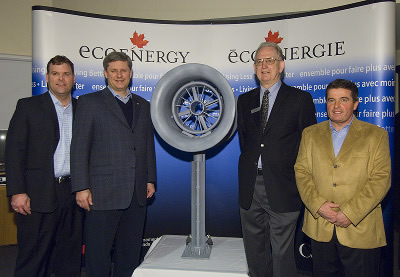 PM Stephen Harper visits Race Rocks for an “ecoenergy announcement” Jan 19, 2007
PM Stephen Harper visits Race Rocks for an “ecoenergy announcement” Jan 19, 2007
Installation of the turbine Sept. 27, 2006
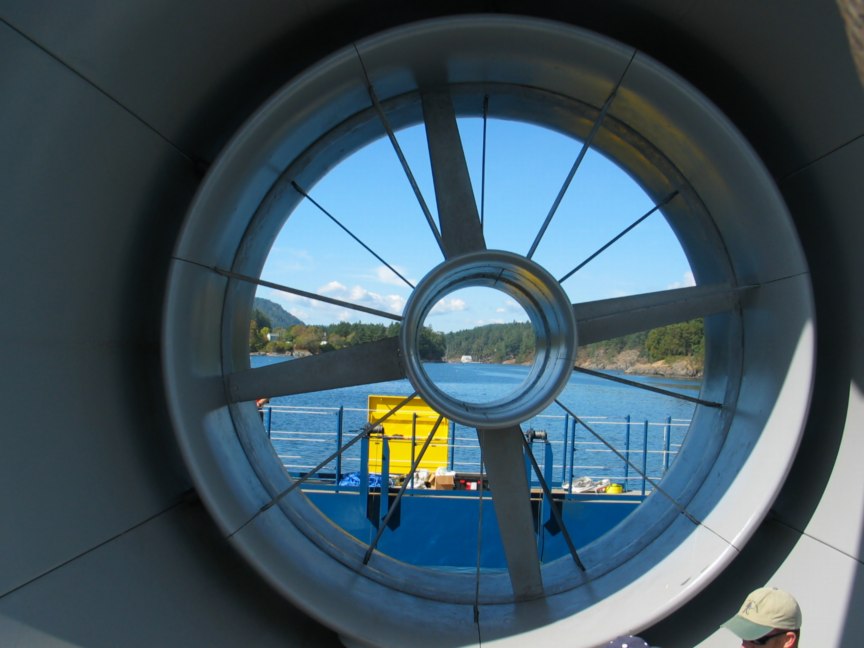 Testing of the Turbine in Pedder Bay
Testing of the Turbine in Pedder Bay
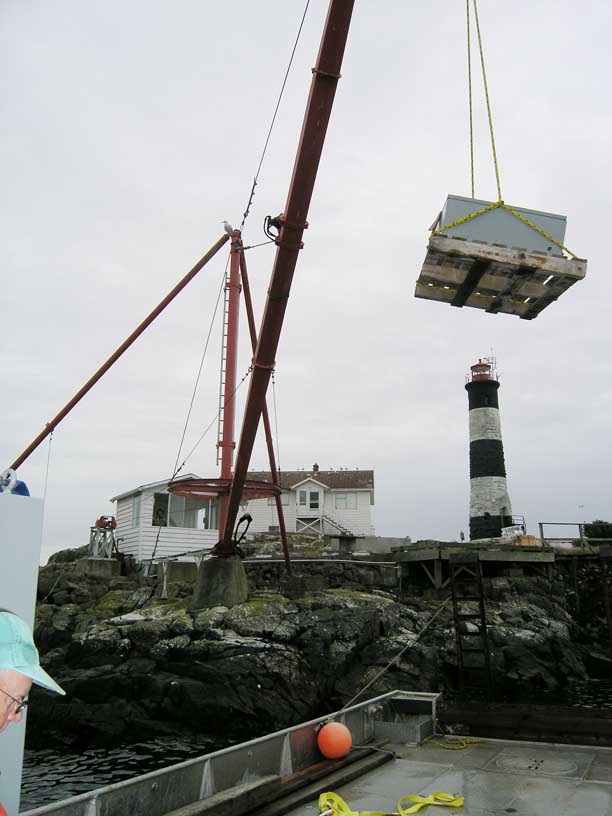 Installation of the turbine control unit
Installation of the turbine control unit
Laying of the cable to shore Aug.20-22, 2006
Installation of upper part of the piling
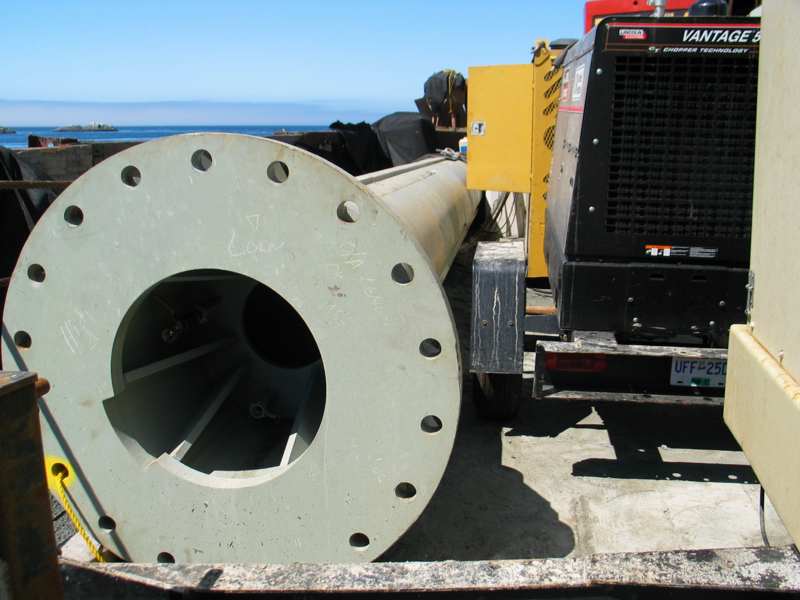 Installation of bottom part of the piling
Installation of bottom part of the piling
Drilling Problems encountered in installation of the tidal current energy Piling
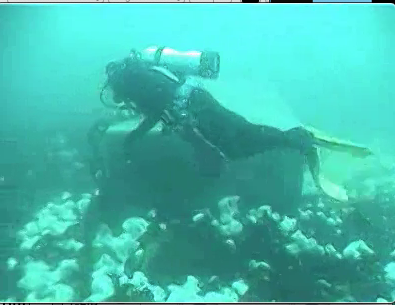 Installation of the Anchors for Drilling for the Tidal Current Energy Project
Installation of the Anchors for Drilling for the Tidal Current Energy Project
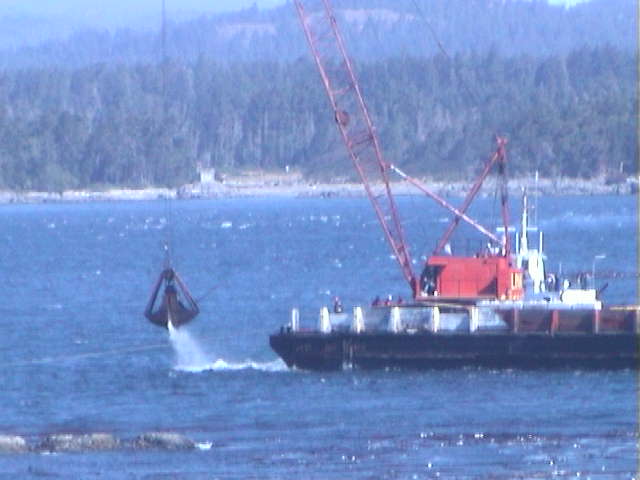 Dredging the overburden for the tidal energy installation.
Dredging the overburden for the tidal energy installation.
Instrument is installed at Race Rocks, Oct.26, 2005
 |
 |
 |
|
| Dredging the overburden | Deployment of Anchors for the Piling July 16, 2006 |
Drilling |
| Underwater Sensors at RR |
| Students of Pearson College help with transferring 96 storage batteries March 10-12, 2006 |
Battery Installation, March 2006 |
Electronic equipment arrives March, 2006 |
| January 2006: preliminary work on piling installation | Preliminary work for Cable laying and Pile Drilling..Nov 2005 | Succession Studies on Different Substrates, summer, 2005 |
| The Race Rocks Weather Instrument is installed at Race Rocks, Oct.26, 2005 |
 |
Link to the Tidal Energy part of the Integrated Energy Project Index |

